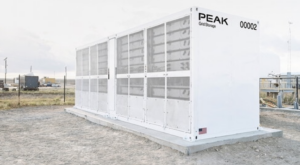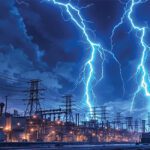Smart Grid technology arrived with a bang more than two decades ago, but the first implementations often overpromised and underdelivered. Smart Grid 2.0, however, integrates new technologies to provide actionable intelligence, coupled with advanced automation and actuators that can dramatically improve grid performance.
Almost as soon as electrical grids were established, there was a need for devices to measure consumption and help electrical energy suppliers price, distribute, and monitor their services. However, the path from those early-generation devices to today’s technology has been a long one, requiring breakthroughs on several fronts. Some of the expanded capabilities seen today have been made possible by numerous innovation programs. However, under the “Smart Grid” banner popularized in the early 2000s, an increased focus on addressing some of the technology and adoption hurdles began to be addressed head-on.
At that time, the Smart Grid was primarily focused on increased data gathering through the deployment of advanced metering infrastructure (AMI). These meters, installed at customer locations, automatically collected and transmitted energy usage data to a central system and eliminated the need for manual meter reads. This data was then processed and analyzed to provide utilities with near-real-time energy consumption information, and due to the large amount of data being collected, an enhanced understanding of load and consumer behavior that could be factored into grid planning and operations. Additionally, due to the connectedness of these AMI meters, the data could also be used to aid Outage Management Systems to help identify service interruptions in near real time.
Despite this achievement, however, most AMI deployments fell short of expectations to transform the grid. The technology to make the grid—and not just the endpoints—truly smart just wasn’t there yet. Today, AMI 2.0 systems are becoming increasingly available and even capable of monitoring harmonics at the grid’s endpoints, but the challenge of understanding what is happening in the grid remains.
Two decades after the term Smart Grid entered the industry’s lexicon, the overall electrical infrastructure has undergone drastic changes, with increased penetration of renewable sources and new types of loads (such as electric vehicles) and behaviors (such as prosumers). This new dynamic, coupled with advancements in technology and the growing need for a reliable, resilient, and secure energy supply chain, is helping us rethink the Smart Grid (Figure 1).

The first place to start should be the distribution grid, which, under Smart Grid 1.0, was on the receiving end of investments in innovation and the deployment of new technology. Great strides have been made; however, much more needs to happen, considering the modernization required to secure a bright energy future.
Bridging the Observability Gap
Historically, distribution grids have lived with an observability gap. This was due to the high costs and logistics of deploying field sensors at scale, the communication challenges between the field and the control center, and the large-scale, distributed nature of these grids. Available technology limits system-wide and granular-in-time visibility of the overall grid status and usage.
With this as the backdrop, real-time grid operation was designed to act mainly on local information, with very selective system-wide coordination occurring on a slower timescale. For instance, protective devices would trip based on local measurements. Managing the efficient use of the distribution grid from a control center typically occurs within minutes to hours. It relies heavily on modeling assumptions and a limited number of real-time field supervisory control and data acquisition (SCADA) measurements.
For Smart Grid 2.0, where increased intelligence is enabled by the availability of lower-cost sensing and the integration of Internet of Things (IoT) functionality into the distribution grid, it is expected that meeting future grid performance metrics will be within reach. To meet these future performance metrics, a solid foundation of grid reliability and resiliency is imperative but possible when assessing the state of technology options available.
However, with outages increasing and most of them being temporary, more intelligence and capability to act on devices in the distribution grid are needed to boost the overall resilience and reliability of the interconnected system. Relying predominantly on fuses for protection in the grid, as has been done in the past, is no longer sufficient (Figure 2). Moreover, these passive devices don’t communicate their status in real time, forcing grid operators to rely on secondary approaches to understand the status of the grid. In addition, fuses are single-use devices. If a fuse operates during a temporary outage, physical intervention is required to replace it and restore the affected part of the grid. Visibility into the grid’s status is needed along with the ability to take action to move it to a more stable and performant state.

Over time, with advancements in technology, grid operations have become more sophisticated, making the integration of sensors increasingly feasible. For example, distribution state estimation is being more widely adopted by distribution grid operators. State estimators for transmission grid operation have been well-established for a few decades, dating back to the 1980s. However, due to limited real-time measurements in the grid (as opposed to grid-edge AMI), they have not been a reliable technology for the distribution grid. In a future where generation sources and active demand are connected to the distribution grid and want to participate in a fully coupled electricity energy market, real-time situational awareness of the distribution grid will also be needed to provide the basis for calculating spot prices and predicting future energy prices.
For the Smart Grid to reach its full potential, intelligence must extend beyond data collection to include real-time action based on increased grid observability. All indications suggest that the observability gap will be bridged; however, can operators effectively act based on the findings from analyzing the state of the grid? To fulfill the potential of Smart Grid 2.0, devices capable of responding to grid conditions in near real-time should also be deployed—restoring power autonomously, isolating faults, and enabling self-healing capabilities. This provides a foundation for driving the incorporation of new generation sources, active demand from traditional loads, and grid use optimization. Without this foundation in place, advanced functions, such as Volt/VAR optimization across the distribution grid, will yield subpar returns.
Making the distribution grid smart isn’t just about adding intelligence—it’s about ensuring that intelligence translates into improved actions, such as protecting assets and increasing the reliability of service. Smart distribution grids must be designed with an increasing amount of sensing, enabling them to act on the insights garnered. That means integrating:
- ■ Self-healing networks that utilize intelligent switching and automation to restore power rapidly.
- ■ A combination of intelligent undergrounding and lateral protection to deliver optimal solutions for various environments.
- ■ Active protection devices deployed to parts of the grid, such as laterals, where automation improves the use of the grid infrastructure.
- ■ Sensors that increase the extraction of actionable information and relay it to provide real-time fault sensing and situational awareness. This enables faster outage mitigation, improves operational efficiency, and helps fill the previous observability gap from earlier Smart Grid deployments.
These provide actionable information and the ability to understand what it means to deliver what is needed to quickly restore power, make rapid repairs, and prevent future outages, thereby achieving a more reliable and resilient grid.
By implementing technology and solution combinations available today on the distribution grid, a Smart Grid that is built with resilience and reliability fully integrated can be created. Once those goals have been met, the focus can turn to improving efficiency and operating the grid at or near its design potential. Looking ahead over the next five years, this will include:
- ■ Load balancing, which is the ability to store energy for future use.
- ■ Feeder rebalancing that uses real-time information to ensure optimal power flow on the distribution grid and minimize congestion in the grid.
- ■ The ability to adjust to optimize grid efficiency as the generation and load patterns change in real time.
The above possibilities are not exhaustive; however, to implement the grid-operation decisions derived from increased intelligence, the grid will require capable actuators. These actuators serve as the muscles that change the system’s state. Research on such actuators is currently ongoing in the industry, and the actuators could involve mechanical or power-electronic switching. The main point to underscore is that in Smart Grid 2.0, actuators, coupled with increased intelligence to control the grid and meet the expectations on the grid, are needed.
The Role of AI in Smart Grid 2.0
One can’t discuss the future of electrical grids without touching on the rapid increase in artificial intelligence (AI) and machine learning (ML) capabilities. It is well understood that the rise of AI/ML places increased demands on existing grids, accelerating the need for grid expansion to meet the electricity demands of the data centers that enable these AI/ML applications.
When it comes to the use of AI/ML in the grid, it is not a novel application, as neural networks have been utilized for load forecasting in transmission grid operations for several years. However, advances in AI/ML driven by use cases outside the power engineering field provide fertile ground for research into their application and the potential for rapid adoption in the power industry. With the increasing amount of data collected from the grid, AI can be used to augment existing knowledge of how power grids operate, helping to close gaps and mathematically model phenomena (such as end-customer behavior) that influence grid operations. Used correctly, this can ultimately improve the overall functioning of the grid.
The benefits of improved visibility and how real-time data makes models and projections more accurate have already been discussed. Armed with increasing volumes of data (not just grid operations related, but also weather, satellite images, and other images captured by drones) AI will help fill in the gaps where other tools have fallen short. For example, it could help identify how the integration of renewable energy resources will impact the grid or solve grid challenges resulting from more electric vehicles. AI will also help with calculations that were previously difficult to model.
One consideration in using AI/ML is data ownership and access control. Grid operators own the grid data, and to foster the growth of AI-based grid innovations, it is envisioned that strong cooperation between vendors and utilities will be necessary.
Future AI implementations on the grid will need to be done strategically and with purpose. While AI is an excellent tool for unlocking value from accumulated data, this technology should not be arbitrarily unleashed on the grid while overlooking the accumulated knowledge surrounding grid operations. Thoughtful use of AI, coupled with established practices, will help enhance overall grid performance in the future.
Delivering on Smart Grid 2.0 for the Future
There has never been a more exciting time to be in the power industry. As engineers and technicians work to make the promise of Smart Grid 2.0 a reality and deliver its full potential, the electric grid can truly be transformed to provide results that go beyond the much-needed resilience and reliability that is already being actively addressed today. Grid operations can be elevated to the next level through the innovative use of actionable intelligence, advanced automation, and capable actuators, thereby dramatically improving efficiency and overall performance. This will help continue to build the grid that is needed to serve future generations and make an outage-free, sustainable, and secure energy future possible.
—Ernst Scholtz is Chief Technology Officer at S&C Electric Company.











